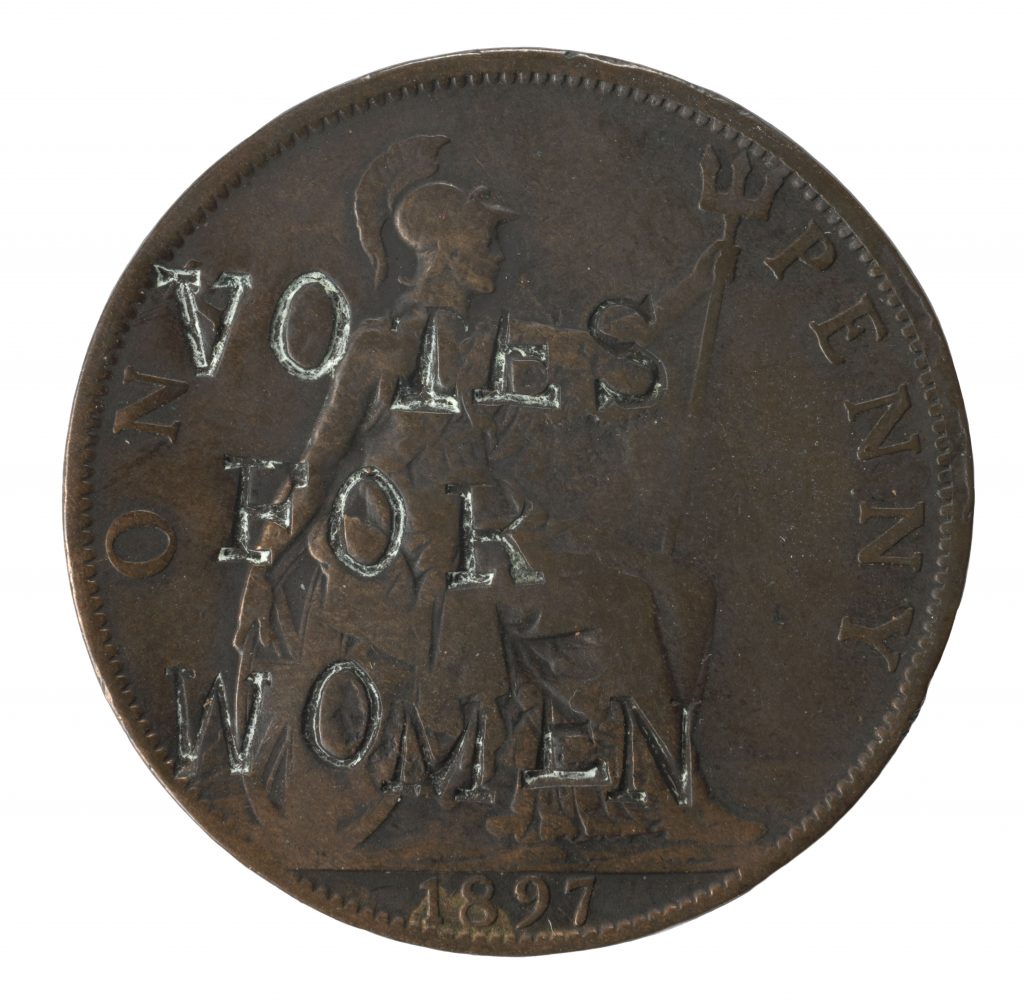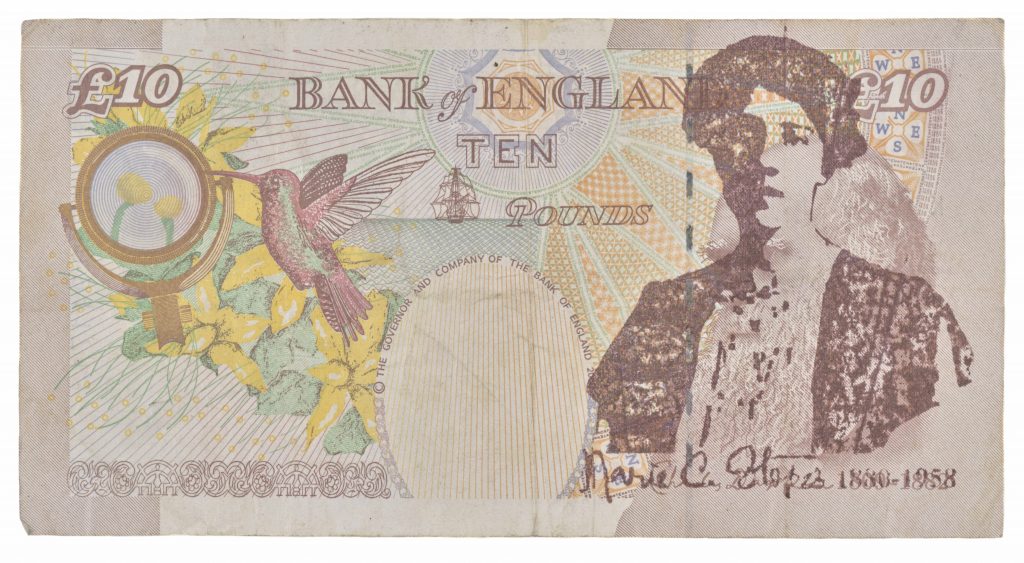Dirty cash | Defaced! Money, Conflict, Protest, Fitzwilliam Museum, Cambridge

“Hands off our NHS” are the first words visitors to the Defaced! Money, Conflict, Protest exhibition at the Fitzwilliam Museum in Cambridge (until 8 January 2023), see. This sets the tone for a deeply political exhibition that asks visitors to consider the meaning of protest.
Museum-goers are increasingly used to this question. Displays on protest are more and more common, often connected to socially-engaged collecting programmes. What makes Defaced! different is that the objects central to its storytelling come from the museum’s coin collection.
Coins and banknotes are explicitly political. In a museum context they are also notoriously “difficult” to display. The size (small) of most numismatic objects doesn’t necessarily lend itself to Instagrammable exhibition shots. A solution to the issues around scale, Defaced! has displays numismatic collections alongside contemporary artworks. This expands horizons both physically and theoretically beyond the cash in your pocket to the impact of monetary exchange on society.
The show itself is spread across three spaces with a design that wouldn’t look out of place in the next Batman franchise. Scaffold poles, coarsely textured chipboard and graffiti-inspired fonts give a gritty feel.
It seems this caused some confusion for one visitor, who insisted they had arrived “to see the money exhibition” and were kindly told that this was an exhibition about money and protest. For me (a committed coin-botherer) it’s great to see preconceptions of what a “money exhibition” should look like challenged at the entrance to a show.
It’s also fair to say that this is an exhibition for people of 12 years and above. Although I would love to know if the brightly coloured graphics have given some families a different impression though? Hopefully not – this is a serious and, at times, bleak show.
Central objects to the exhibition are defaced coins. Defacement is defined as object-based vandalism, but here it is redefined as a form of protest. From the iconic "votes for women" pennies to more complex satire, these objects were modified to get messages across in an accessible way. They also include some of the most gut-wrenching objects in the show.

To be confronted with a penny, so similar to our very own loose change but stamped with “PETERLOO MURDER AUG 10” transports the visitor back 200 years to Manchester and the Peterloo Massacre.
Anti-slavery half-pennies feature here too, accompanied by rubble collected from the Hackney Riots in 2011, and an American $5 bill, embossed by artist Paul Embleton with “ALL LIVES CAN’T MATTER UNTIL – BLACK LIVES MATTER”. It begs the question – two centuries of protest, and for what?

The show includes contemporary artist Paula Stevens-Hoare’s Notable Women print series, which protested the removal of the 19th-century social reformer Elizabeth Fry from £5 notes in 2016. Among the women featured is Marie Stopes, who disappointingly is described in the exhibition as “controversial” rather than the racist, eugenicist that she was. I wonder whether it was the intersection of feminism and racism that stopped the team’s honesty?
The exhibition is explicit in how it addresses brutality and violence. A forged banknote dating from 1819 is described on its label as a “Deadly Object”. At the time, anti-forgery laws in Britain meant that those who were caught in possession of them could be sentenced to deportation, and users could be sentenced to death.
At a global scale, the bloodshed of the British Empire is visceral when you encounter a field artillery gun used in the 1899 Siege of Mafeking, South Africa. This is in stark contrast to the pennies overstruck with a new design by soldiers who fought there.

Conservative and outright fascist objects also feature. Critics of the political activist Thomas Paine produced tokens that showed him hanged from the gallows, surrounded by the slogan “End of Pain”. Coins defaced in support of Adolf Hitler are also displayed. A stark reminder that protest is not only the right of those on the political left.
Our emotional connection to money is also explicit. As a response to decimalisation in 1971 (when the old monetary system of pounds, shillings and pence was replaced with decimal coinage), some new British coins were over-stamped with "shilling" or even "DUD". This sense of loss is a great entry point into the consideration of hyperinflation (where the value of money rises so fast it loses its purchasing power) with displays of over-printed and re-valued German currency from the 1920s.
Loss is of course a theme of climate justice and banknotes redesigned by a variety of artists address species extinction. These however were mounted fairly high so wheelchair users might find them more challenging to access.
For me, a sense of touch was what was really missing from the show. I would have loved some enlarged, 3D-printed versions of some of the most dramatic coins; not only would that help visually impaired visitors, but it would also else enable people to physically trace the defacing action of protest on the coin.
The exhibition makes good use of lots of different video content, but sometimes these were unlabelled, so it was hard to know what you might be embarking on. Equally, if you have sensory processing needs, you might want to take some headphones.
The centrepiece of the exhibition is an installation of Big Bang 2 – a golden van filled with banknotes that represented £1.2m of debt in 2019, which was purposefully exploded the same year. The deconstructed van, whose pieces, suspended in the gallery, feel like shrapnel, is visually stunning. More importantly it adds an important narrative, especially through the accompanying film, about what happens if we question and resist the capitalist machine itself. This speaks directly to the cost-of-living crisis and questions who decides how much our money is worth.
One of the final objects is an Asylum Support Enablement Card, used by those seeking refuge or asylum to access the £5.33/day our government grants them. This absence of cash for everyone, not just the most vulnerable, is considered at the end of the show, with a final question posed to visitors: “... can collective action ‘deface’ the system?”
My answer: it's up to all of us to try.
Lucy Moore is projects curator at Leeds Museums & Galleries